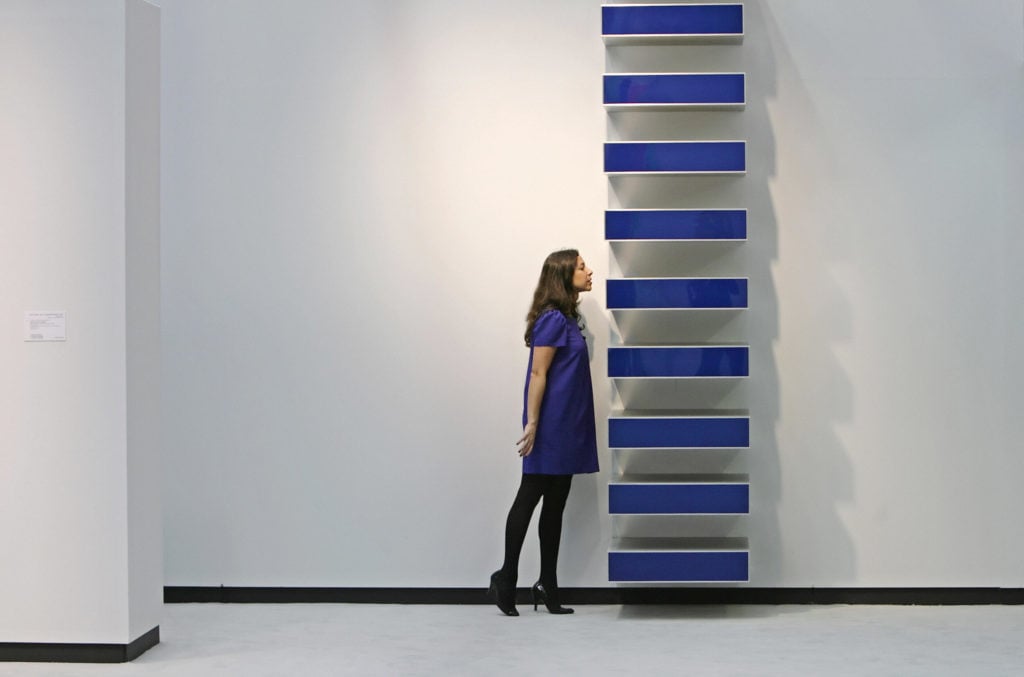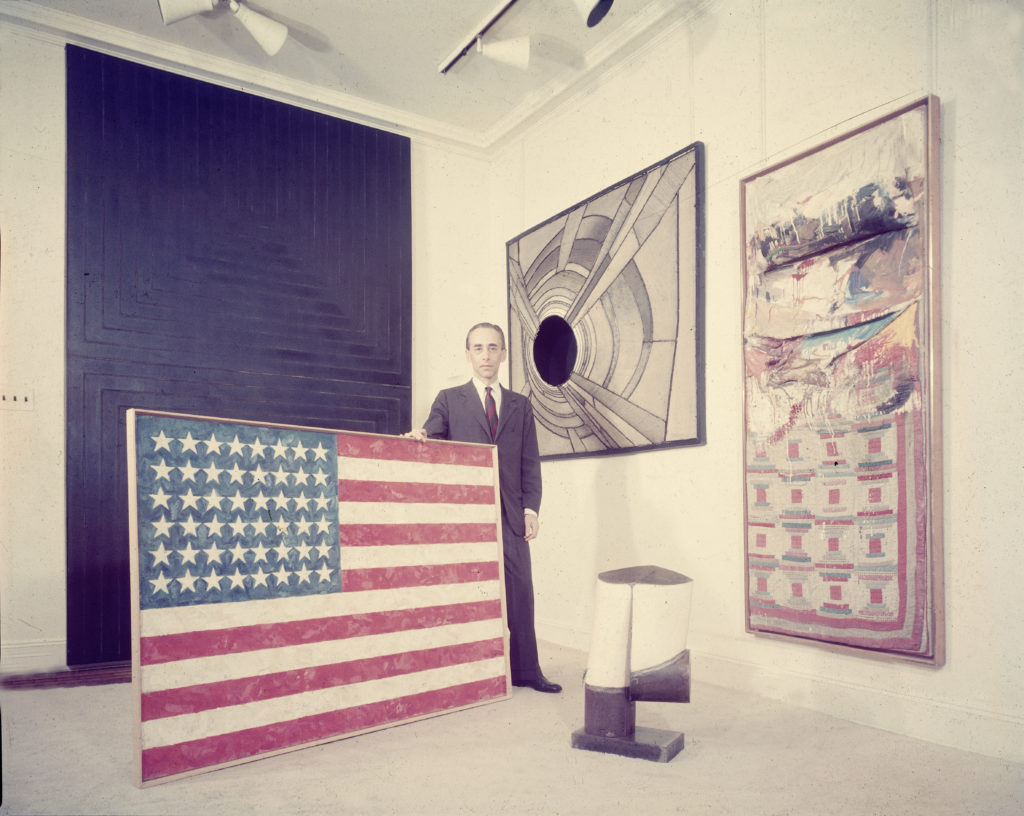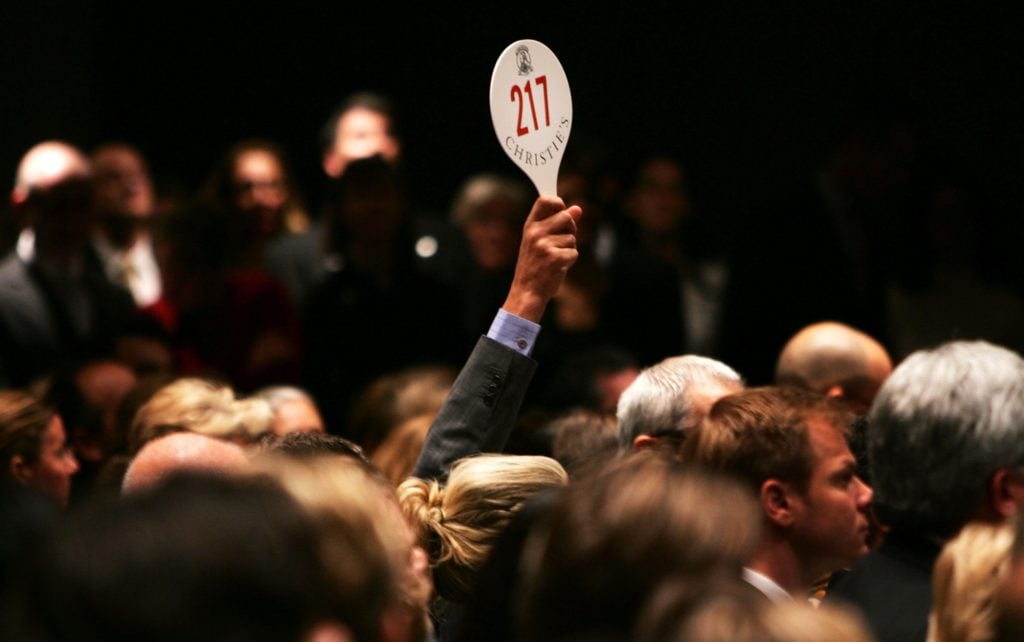5 Tips for Bidding on Art at Auction Like a Professional—and Winning


Joseph Kraeutler

With the stratospheric prices from last week’s contemporary art auctions still buzzing in the headlines, you may be wondering if there’s room for non-billionaires in the salesroom. But indeed there is—and for a canny buyer, auctions can actually offer very good deals on exceptional works. The trick is that auctions vary widely, and bidding styles differ even further from person to person, so finding your own style can only be achieved through experience. That said, novices often make certain mistakes that lead to overpayment for works or losing their desideratum due to lack of knowledge. For those wanting to sharpen their skills before the next sale comes around, here is a basic guide to effective bidding—with a few tips to help navigate any auction.

Always sniff the Judd stack to make sure it’s ripe. (Photo credit should read Leon Neal/AFP/Getty Images)
Research is critical when bidding at auction, because knowing exactly what it is you are bidding on—and how aggressively to bid on it—are the cornerstones of collecting. If you feel that your knowledge of the medium is limited, find an expert you trust and discuss the lot with them. Most dealers, specialists, and curators are happy to give their advice on a work if you occasionally include them in a transaction. The best way to find an ethical expert is by asking more experienced collectors who they like to work with, and who they trust for information. Another great resource is a price database where you can look up auction records for comparable lots. Most of the free services only offer limited records, which can be misleading. Don’t skimp in this area; pay the annual fee for a reputable database. (artnet, ahem, has the best and most widely used one.)

Just your average art dealer. (Photo by Eliot Elisofon/The LIFE Picture Collection/Getty Images)
Typically, auctions will not include editioned works currently for sale at a gallery. However, an auction house may commit to an entire collection or make an exception to this rule. Call the artist’s gallery and find out if the work is available on the primary market first. Surprisingly, people frequently pay two or three times the current retail price at auction for a work, which is available from the gallery. If the gallery tells you the work is sold out, ask what price the last piece in the edition sold for and when the edition was closed. This gives you a sense of how desirable the work is and how much time it has had to appreciate. Finally, when deciding how much to spend, take into consideration the additional charges. This includes sales tax, the buyer’s commission, and shipping fees.

Very inconspicuous. Photo by James Paterson/N-Photo Magazine via Getty Images.
So, your research is completed, you understand the art work you’re bidding on, and (hopefully) have a good idea of how much you want to spend. How do you bid? My favorite way to bid is with an absentee bid. Collectors in an auction room or on the phone can easily get caught up in the excitement of the auction and pay more than they originally decided. With an absentee bid, you can bid the exact amount you calculated and receive priority in the case of a tie with a live bid. I would also recommend you select a top price threshold that is one increment bid above what you would normally pick. For example, if you want to spend around $10,000 on a lot, put your absentee bid in at $11,000. People tend to think in whole numbers, and that extra little bit could make the difference between winning a lot and a tie bid. Every lot has a reserve price and an estimate.

The bidder on the ceiling.
(Photo by Mark Wilson/Getty Images)
Before getting into the bidding process, understand that the estimate is simply the price range of what the auction house believes the work will sell for, and that the reserve of the artwork can not legally be revealed by the auction house—but it can’t be greater than the lower number of the estimate. For instance, if a work is estimated at $10,000-15,000, the reserve will be $10,000 or less. If you are the only bidder on a lot, the auctioneer will bid against you until they reach the reserve price. This is referred to as chandelier bidding. Although, in the moment, this may seem like the auctioneer is trying to make you pay more, they cannot sell the work below the reserve. This is a common practice at auction and nothing to be concerned about.

A bidder at a Christie’s postwar and contemporary art sale in New York City. Photo by Spencer Platt/Getty Images.
If you trust your ability to stay focused and think you won’t get caught up in the bidding, you can go to the auction in person. Most dealers sit in the front few rows and bid very subtly. The auctioneer generally knows these people and is looking to them for bids. Dealers like to keep their bids private because they will ultimately be reselling a work at a later time. For a collector, this doesn’t really apply. In the case of a new collector, especially, the auctioneer and their spotters will not be looking for you, and you could get ignored if you don’t hold your hand up high in the room. As an extra precaution, sit in a chair on the side of the room so that spotters will see your bidding even if the auctioneer does not. There are different styles in bidding in the room. Some like to jump right in at the beginning of the lot and bid until they reach their limit while others like to sit back and wait for the bidding to slow down before placing their bids. I am a fan of the latter—as long as you don’t wait too long and miss your opportunity to bid.
*******
In the end, auction is the closest gauge we have for valuing a work of art. Anything can happen in the room when you get the right people passionately going after the same thing. Do your research and try not to get caught up in the excitement. In the end, you can pay a fair price for a work you love.
Joseph Kraeutler, a veteran art dealer and auction bidder, is the head of artnet Auctions‘s photography department.

Joseph Kraeutler. ©Patrick McMullan; photo by Shaun Mader.